Bat, Al-Khutm and Al-Ayn
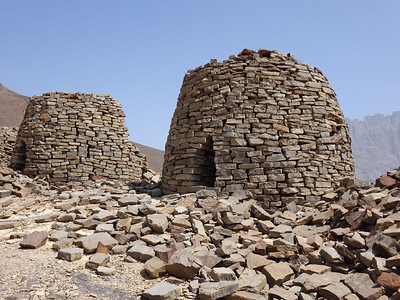
The Archaeological Sites of Bat, Al-Khutm and Al-Ayn comprise a settlement and a necropolis from the 3rd millennium BCE.
The area at the time was part of a long-distance trade economy, involving copper being transported from Oman to Mesopotamia. The settlement and necropolis of Bat are renowned for their Bronze Age funeral practices, with over 100 dry-stone beehive tombs. Associated sites nearby include the monumental tower of Al-Khutm and the group of beehive tombs of Qubur Juhhal at Al-Ayn.
Community Perspective: the chance of reaching these sites has improved over the years, also thanks to the directions provided in the reviews. The archeological site of Bat is fenced off so its contents stay mostly unreviewed (though Solivagant gained illegal entry), as is the case with the tower of Al Khutm.
Canterbury
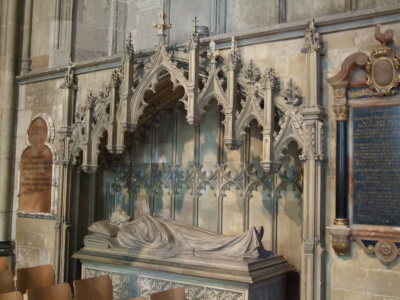
Canterbury Cathedral, St Augustine's Abbey, and St Martin's Church represent the introduction of Christianity to the Anglo-Saxon kingdoms.
St.Martin's Church is England's oldest parish church in continuous use. The (now ruined) St. Augustine Abbey was also founded in the late 6th century, by the Benedictine monk Saint Augustine on a mission from Rome. Canterbury (Christ Church) Cathedral was founded a few years later. It has attracted thousands of pilgrims since Archbishop Thomas Becket was murdered here in the 11th century. It is the cathedral of the Archbishop of Canterbury, leader of the Church of England. The building is also rewarded for the beauty of its architecture and early stained glass windows.
Community Perspective: The Cathedral’s architecture is impressive, mostly for its sheer size. You can follow Queen Bertha's Walk on foot, which links the three components of this WHS.
Chichen-Itza
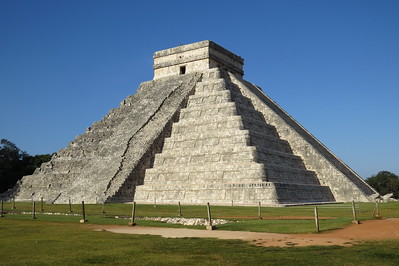
The Pre-Hispanic City of Chichen-Itza comprises the archaeological remains of a city built by the Maya-Toltec civilization.
Originally a Classic Mayan city, it boasted monuments in the Puuc-style. In the 10th century, Toltecs migrated here from Central Mexico and their architectural style blended with that of the Maya. From this period date the Caracol observatory, the Great Ball Court, and the Temple of Kukulkan.
Community Perspective: This sees high numbers of tourists and all is fenced off nowadays so you cannot get close let alone climb anything. It’s best to visit early in the morning. Allow some 3 hours to see it all.
Djenné

The Old Towns of Djenné comprise the city of Djenné with its typical architecture and the archeological sites of four pre-Islamic towns.
Djenné, situated on an island in the Bani-river, was a prospering city from the 14th til the 16th century as an important station on the Trans-Sahara route. Its Grand Mosque, originally dating from the 13th century, fell into decay but was rebuilt in the early 20th century. It is replastered yearly in a festival-like event in Spring. The associated archeological sites are Djenné-Djeno, Hambarketolo, Tonomba and Kaniana. They hold remains of traditional brick structures and have produced a wealth of terra cotta artifacts and metal.
Community Perspective: the Old Town is appreciated for its photogenic mud-covered mosque and old two-story houses. Solivagant also visited the archeological site of Djenné-Djeno.
Epidaurus
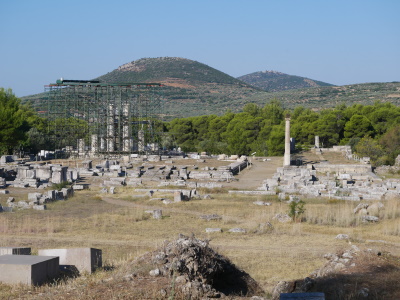
The Sanctuary of Asklepios at Epidaurus is renowned for its influential healing cult and Hellenic architecture, especially its Theatre.
From the 4th century BCE, Epidaurus became widely known as a sanctuary to Asclepius, the God of Medicine. There were temples, baths and a hospital here, and people from as far as Rome came to be healed. The Theatre of Epidaurus is an architectural masterpiece because of the perfection of its proportions and acoustics.
Community Perspective: There is not much to see of the original buildings from the place of healing, but the theater with a seating capacity of 14,000 is a highlight. Tsunami was able to attend a performance in the theater at night.
Guanajuato
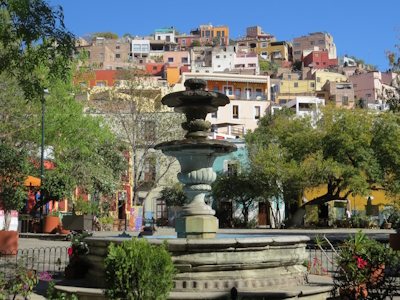
The Historic Town of Guanajuato and Adjacent Mines is an example of an influential mining town, with its technological innovations and Baroque architecture.
It became the world's leading silver-extraction centre in the 18th century after the decline of Potosi. It had a 600m deep mine shaft and major hydraulic works. The wealth that resulted from this can be seen in monuments like the church La Valenciana with its monumental Churrigueresque portal.
Community Perspective: Possibly the best of the Mexican colonial towns. Highlights include the Monumental al Pipila viewpoint, the Teatro Juarez, the cathedral, and the Universidad de Guanajuato. Try to catch a Callejoneada performance when you stay for the night, as suggested by Ian.
Henderson Island
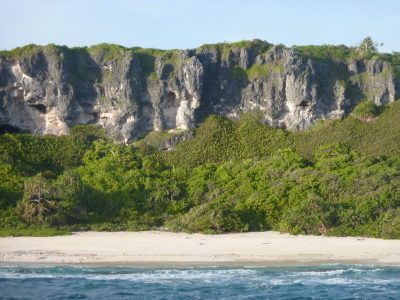
Henderson Island is an isolated uplifted coral atoll known for its bird life.
The island is part of the Pitcairn Islands and lies in the South Pacific Ocean. The landscape consists of limestone cliffs, sandy beaches and forests. Due to a shortage of fresh water, it is not well-suited for human occupation. It has large breeding seabird colonies and all four land bird species are endemic to the island, including the flightless Henderson Crake.
Community Perspective: This site has been unreviewed so far.
Hierapolis-Pamukkale
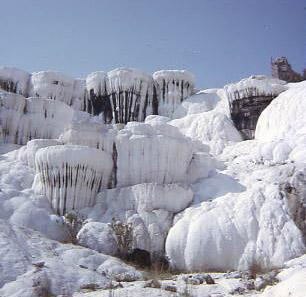
Hierapolis-Pamukkale was an ancient thermal spa based on natural hot springs.
Pamukkale consists of a striking natural landscape of white terraces with travertines stemming from calcite-rich water from the hot springs. Under Hellenistic and Roman rule, the area became a healing centre using the hot springs for therapies. Religious structures were added as well, a practice that continued into the Early Christian period.
Community Perspective: The calcium terraces of Pamukkale are brilliantly white and still are inviting to bathing tourists (it “can be an absolute circus targeted especially for tour groups”). The ruins of Hierapolis are typical of other Greco-Roman cities, but its excellent location just above the travertine pools and hot springs stands out.
Kairouan
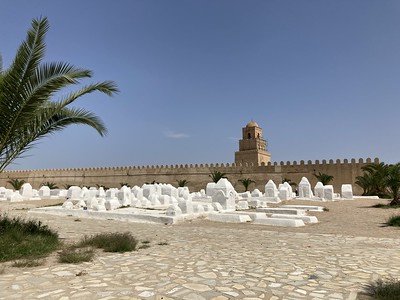
Kairouan, one of the holy cities of Islam, is renowned for its Great Mosque, which has influenced the style of other mosques in the Maghreb.
Kairouan was founded in 670 CE as a post in the Arab conquest of the West. Its heyday came with the Aghlabid dynasty which built the Great Mosque and established a university that was a centre of education both in Islamic thought and secular sciences. Other notable monuments of that period include the Mosque of the Three Doors, the Basin of the Aghlabids and the Zawiya of Sidi Sahib.
Community Perspective: Easy to reach from the tourist hub of Sousse, but don’t visit on a Friday as everything will be dead. Wander around beyond the medina and the Great Mosque, for example to the impressive Aghlabid Basins.
Kandy
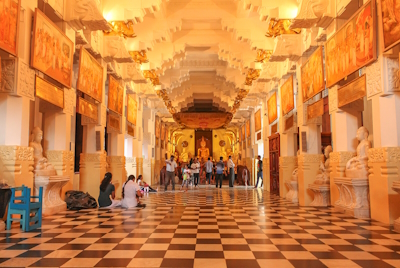
The Sacred City of Kandy was the last capital of the Sinhala kings and holds an important Buddhist relic.
Kandy was Ceylon’s capital till the arrival of the British in 1815 and the Royal Palace remains. It also still is an important Buddhist pilgrimage site for the presence of the Temple of the Tooth. According to tradition, a tooth of the Buddha is kept here.
Community Perspective: Kandy is a small city set in pleasant green hilly surroundings. Frederik has described what you may expect from a visit to the Temple of the Tooth.
Lima
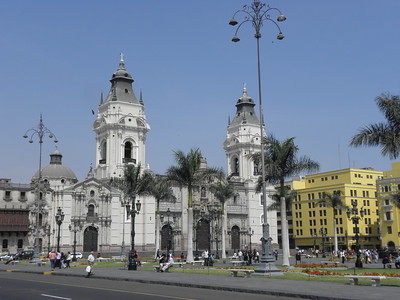
The Historic Centre of Lima has been a leading city in the New World since its foundation in 1535 by Spanish conquistador Francisco Pizarro.
The centre covers both banks of the river Rimac and holds numerous religious and public buildings that date from the 17th and 18th centuries when Lima was the capital of the Viceroyalty of Peru. Its San Francisco de Lima is one of the most complete and outstanding convents of the colonial era.
Community Perspective: Lima gets a lot of mixed reviews: “There are colonial remnants if you look for them”, but it “lacks a truly iconic building, monument or landmark”.
Manovo-Gounda St. Floris

The Manovo-Gounda St. Floris National Park covers an extensive savanna landscape that forms a transitional zone to the rainforests.
Here animal species from the East and West African savannas cross paths with those of the forests of the South. They include elephant, hippo, leopard, cheetah, wild dog, and buffalo. The park includes the entire basins of three rivers with grassy floodplains and wetlands. 320 bird species have been recorded.
Community Perspective: Gavin reports about the poaching situation in 1997 (the black rhino and lion mentioned in the original nomination have already disappeared from the park).
Medina of Sousse

The Medina of Sousse is the most important example of military coastal architecture from the early period of Islam.
The city flourished from the 9th century, and the oldest buildings in the historic center such as the Ribat, the Bu Fatata Mosque and the Great Mosque date from this period. They show examples of Islamic art and construction techniques in its first period. Its ribat is the oldest and most typical of this type of fortifications that were constructed along the North African coastline. They combined military and religious functions.
Community Perspective: this medina attracts lots of tourists because of its location next to the holiday resort stretch of the Tunisian coast, resulting in a less genuine experience. The Archaeological Museum (Kasbah) with a vast display of mosaics is recommended for a visit.
Meteora
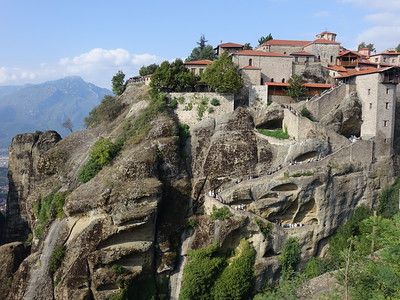
Meteora comprises a landscape filled with monasteries built on high rock pillars.
The monasteries were founded in the 14th and 15th centuries as an expression of life in solitude and offered protection in times of political instability. Some hold fine post-Byzantine frescoes. The iconic sandstone rock pillars were created about 60 million years ago by the effects of rivers and earthquakes.
Community Perspective: Set in a stunning landscape, some of the monasteries can only be reached on foot via many steps. They all close on certain days of the week and may have a long lunch break (see the schedule in Daniel’s review). Els has described how to visit on public transport and solved the mystery of the 7th monastery.
Mount Athos
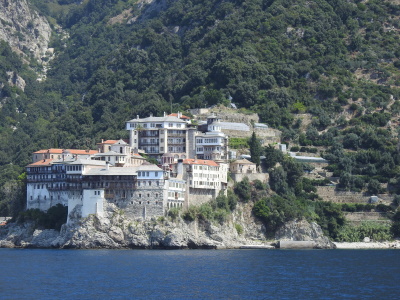
Mount Athos is a holy mountain that has been the spiritual centre of the Orthodox world since 1054.
The forest-clad slopes of Mount Athos lie on a peninsula in the Aegean Sea. This self-administered area, which is forbidden to women and children, includes 20 monasteries that have been influential on religious architecture and iconographic painting. Mount Athos is also home to 12 "sketes", communities of Christian hermits.
Community Perspective: Several male community members have succeeded in entering: Solivagant (in 1965!), Bojan (a Serbian perspective), Tsunami (at Orthodox Easter), Nan (has well-described the practicalities involved), Alexander (comes with some warnings). For the females, only a sightseeing boat trip is available as detailed by Els.
Nanda Devi and Valley of Flowers
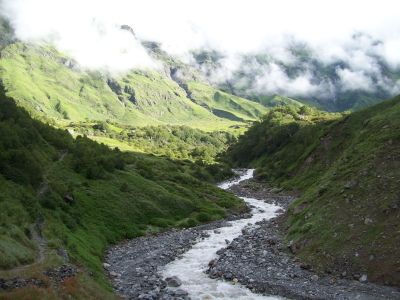
Nanda Devi and Valley of Flowers National Parks cover mountain landscapes in the West Himalayas that are renowned for their diverse alpine flora.
The Nanda Devi is India's second-highest mountain, and its park holds a spectacular landscape of glaciers, moraines, and alpine meadows. The nearby Valley of Flowers has diverse flora and is known for its medicinal plants and a huge variety of butterflies. Mammals encountered in both parks include tahr, snow leopard, musk deer, serow, Himalayan and black bear.
Community Perspective: We're still awaiting a first full review. Nanda Devi NP is closed to tourism (and mountaineering), while the Valley of Flowers does see a decent number of visitors. Go and watch the flowers in full bloom in July-August.
Old Town of Galle
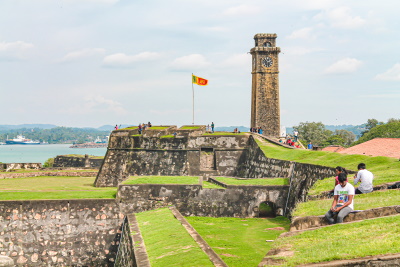
The Old Town of Galle and its Fortifications illustrate the interaction of European architecture and South Asian traditions.
In the early 17th century Galle was taken from the Portuguese by the Dutch. They established the still-existing fortress and ramparts as well as its urban look. European building materials were replaced by those more convenient in Asia such as coral and granite, and verandahs and shaded streets were added to suit the climate. Particularly notable also is its 17th-century sewer system flushed by seawater.
Community Perspective: The fort and city center are in good condition and reviewers find the place quite charming.
Rhodes
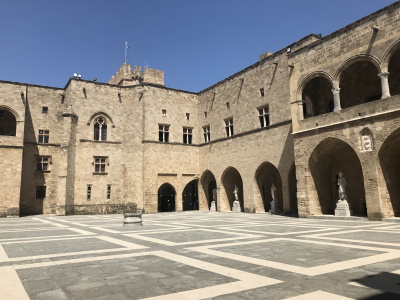
The Medieval City of Rhodes, built by the Christian military order Knights Hospitalers, is a historic town in the eastern Mediterranean.
The fortified city center is located within a 4km long wall. It has numerous fine Frankish (Gothic) and Ottoman buildings. The high town is where the buildings from the Knights remain, such as the Grand Masters' Palace and the inns. In the lower town, built when the city was expanding, Byzantine and Islamic monuments can be found.
Community Perspective: Usually “stuffed with visitors from cruise ships and the nearby party destinations”, the site best is explored off-season. The Palace of the Grand Master and the Street of the Knights are the highlights from the period of the Knights.
Salamanca
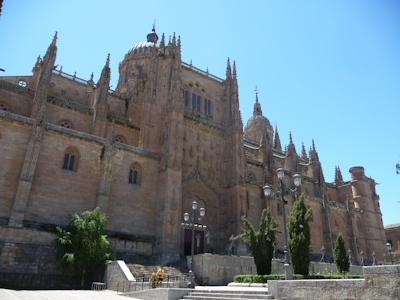
The Old City of Salamanca comprises an ancient university town with groups of buildings in the Churrigueresque style.
The university was founded in 1250 and occupies a number of architecturally coherent buildings. The city furthermore has numerous civil and religious monuments, notably those surrounding the 18th century Baroque Plaza Mayor. Many were designed by members of the Churriguera family, whose “churrigueresque” style became influential in the Iberian Peninsula and Latin America.
Community Perspective: It’s a popular place to study the Spanish language, and that’s what several of our reviewers did and they found it hard to leave. Hubert even calls it “the most elegant and glamorous of all the historic city centres on the Spanish World Heritage List.”. The Plaza Mayor, the two Cathedrals and the Casa de las Conchas are all great sights.
Sinharaja Forest

The Sinharaja Forest Reserve is a hilly virgin rainforest that is a treasure trove of endemic species, including trees, insects, amphibians, reptiles, birds and mammals.
The flora is a relic of Gondwanaland and thus provides input for the scientific study of continental drift and biological evolution. It also is in a geological transition zone. Notable fauna includes the leopard and Indian elephant, plus the endemic Purple-faced Langur and 95% of Sri Lanka’s endemic birds.
Community Perspective: Animals are hard to see in this dense rainforest. You can access the park from several entrance points; the northern one (Kudawa) seems to be better for bird observation. Reviewers have warned of the leeches. It also is compulsory to pick up a guide from the entrance.
Strasbourg
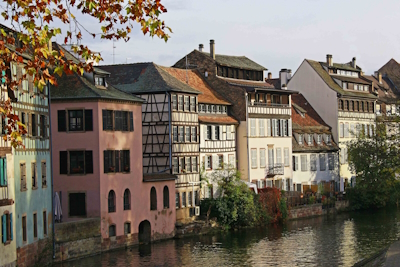
Strasbourg, Grande-île and Neustadt comprise the medieval historic centre of Strasbourg including its Cathedral and its German-built New Town.
The free city of Strasbourg was an important commercial centre in the Middle Ages. Its urban landscape is typical of the Rhineland and shows both French and Germanic influences. The Gothic Cathedral is the center of this city organized around rivers and canals, with an additional network of (post-)medieval streets adorned by timber-framed buildings.
Community Perspective: You’d best spend your time here just wandering around. The German-developed, late 19th century New Town, located across the river from the medieval city, sharply contrasts with the rest of the core zone and divides opinions.
Thessalonika
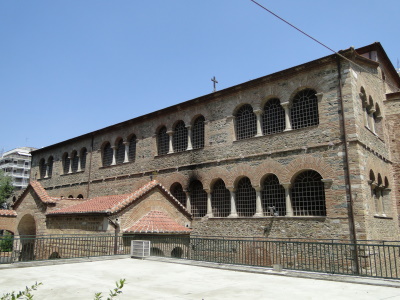
The Paleochristian and Byzantine Monuments of Thessalonika comprise a series of mostly religious monuments known for their mosaics and distinct architectural typology.
Thessalonika was the Byzantine Empire's second city (to Constantinople) and an important artistic centre. These monuments were constructed from the 4th to the 15th century. They contain masterpieces from Early Christian art (such as the mosaics in the Rotunda), as well as subsequent periods, culminating in the churches of the late Byzantine Period.
Community Perspective: Thessaloniki is a convenient hub to explore the WHS of northern Greece. Allow one day in the city itself to check out the 15 components, and be aware that some have very limited opening hours. Assif has provided a good summary, while Hubert additionally recommends the Museum of Byzantine Culture.
Timbuktu
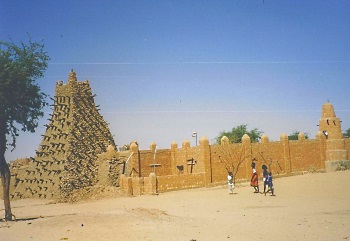
Timbuktu was an important commercial, spiritual and cultural centre on the southern trans-Saharan trading route.
It profited from the booming gold and salt trade in the Sahara region from the 15th century onwards. Housing a famous university, three large mosques and several madrassas, Timbuktu also played an important role in the early spread of Islam in Africa. The inscription actually narrows down to the three large mosques and sixteen cemeteries and mausoleums of Timbuktu. The buildings show traditional characteristic construction techniques.
Community Perspective: those who managed to visit found sand-covered streets and souvenir-selling Touareg. Due to terrorist/kidnapping threats, it nowadays is only accessible by flying in.
Tower of London
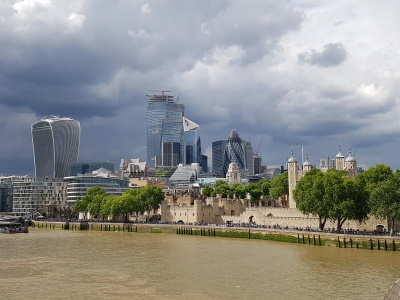
The Tower of London is a medieval fortress palace that has the best-preserved remains of a royal Norman castle.
The 11th-century Norman White Tower is the oldest part, established by William The Conqueror. During his military conquest of England, he founded his castle at a strategic location at a bend in the Thames as a gateway to London. The site has stayed a symbol of royal power since, as it was extended by Richard Lionheart and Edward I. The 19th-century Waterloo Barracks still houses the Crown Jewels of the United Kingdom.
Community Perspective: A visit can be disappointing, due to the high entrance fee, overcrowding and the amount of surrounding highrise constructions. Hubert recommends attending the Ceremony of the Keys (reservation required). Or you can approach by a river cruise to “sense the fear that the tower would have inspired”.
Trinidad and the Valley de los Ingenios
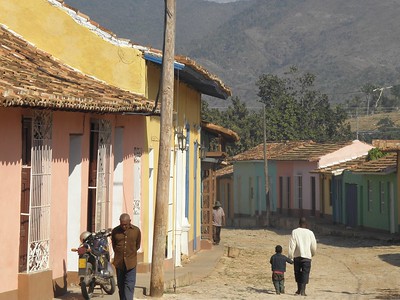
Trinidad and the Valley de los Ingenios are testimony to the sugar trade, which resulted in Trinidad's prosperity in the 18th and 19th centuries.
Trinidad was founded already in 1514, but the remaining buildings date from the sugar boom and include impressive public buildings and single-storey domestic houses with verandas and multi-coloured walls. In the San Luis, Santa Rosa and Meyer valleys, areas of sugar production remain such as sugar mills, villages of craftsmen, plantation houses and slave quarters.
Community Perspective: Trinidad’s small, well-preserved city center attracts hordes of tourists. The Valley of the Sugar Mills nowadays seems devoid of sugarcane.
Wet Tropics of Queensland

The Wet Tropics of Queensland is an area mainly consisting of wet tropical rainforests with a great variety of animal and plant species.
It contains the remains of the great Gondwanan forest that covered Australia and part of Antarctica 50 to 100 million years ago. It is an important source of information for the study of fossils (especially of marsupials) found elsewhere in Australia. The site holds many endemic flora species and is home to the flightless Australian cassowary, one of the largest birds in the world.
Community Perspective: All reviewers so far have covered Barron Gorge National Park (an easy ride from Cairns). The other 40 or so parks and reserves stay unreviewed.
Xanthos-Letoon
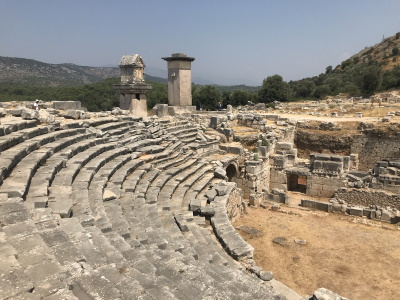
Xanthos-Letoon comprises two archeological sites that represent the Lycian civilization.
Xanthos was a center of culture and commerce in ancient Lycia. Their artwork is well known, the most famous being the Nereid Monument (now in the British Museum). The sanctuary of Leto called the Letoon was one of the most important Lycian religious centers. At both sites, multilingual inscriptions have been found which have provided crucial keys in the deciphering of the Lycian language.
Community Perspective: At Xanthos, it is worth concentrating on the Lycian aspects (there are Hellenistic/Roman ones as well), especially the tombs at the Necropolis. Unfortunately, most sculptural highlights at the acropolis are replicas. Clyde and Solivagant also took the detour to Letoon, “a dispiriting place”.